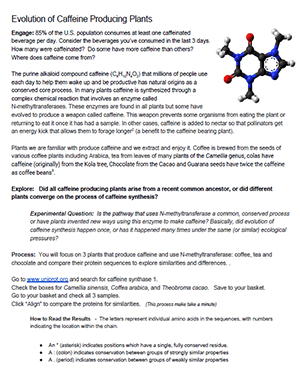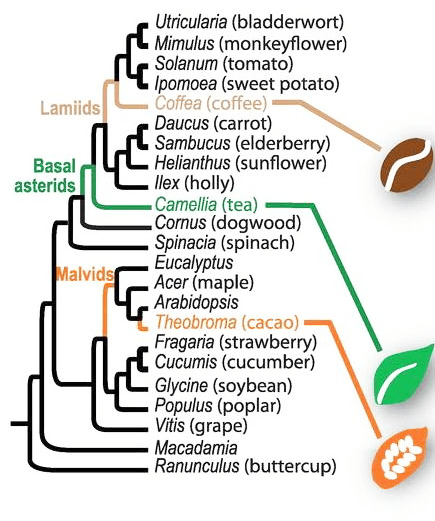
In this activity, students access a database called UniProt that provides information about protein sequences derived from genome sequencing.
Students search for the protein sequences of three plants that produce caffeine, Camellia sinensis, Coffea arabica, and Theobroma cacao (tea, coffee, and cocoa).
They compare the protein sequences to determine if the gene to create caffeine arose independently in each plant. Phylogenetic trees indicate that these plants do not share a common ancestor.
The activity also includes a reading of an abstract from PNAS on Convergent evolution and examining a phylogenetic tree. The uniprot data plus the abstract and tree provide a basis for determining how caffeine production evolved. In these cases, the trait evolved through convergent evolution.
The lesson follows the 5E model: Engage, Explore, Explain, Elaborate, Evaluate. The final evaluation task requires students to make a CLAIM about the evolution of caffeine producing plants, and then provide evidence and reasoning. My students are familiar with writing CERs.
HS-LS1-1 Construct an explanation based on evidence for how the structure of DNA determines the structure of proteins which carry out the essential functions of life through systems of specialized cells
HS-LS3-1 Ask questions to clarify relationships about the role of DNA and chromosomes in coding the instructions for characteristic traits passed from parents to offspring.


